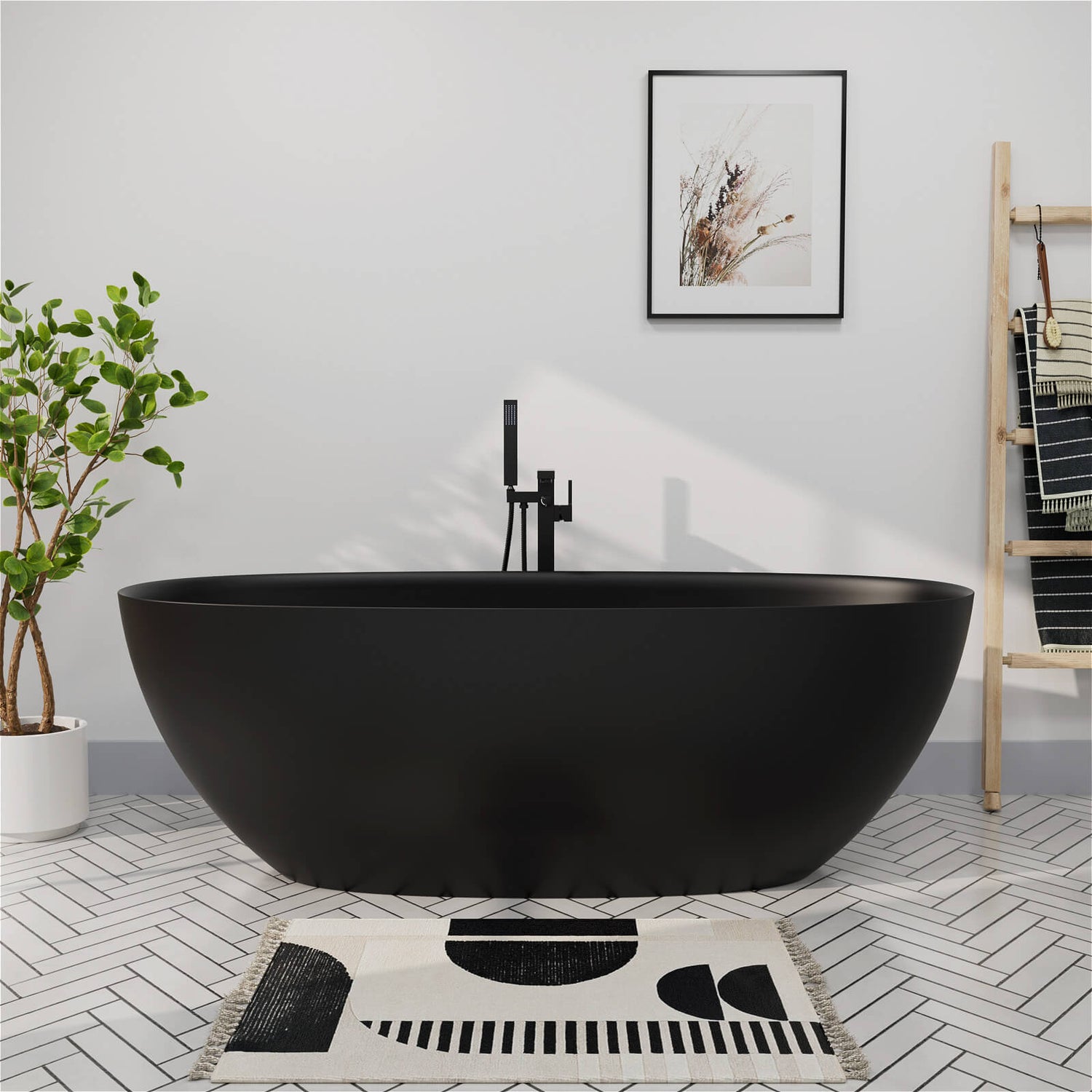For homeowners considering a bathroom renovation, a freestanding bathtub is undoubtedly an important option, its easy installation and diverse design styles make it the top choice for modern young people. Among the many options, some homeowners might prioritize a clawfoot bathtub that is compatible with vintage styles. But is it the right fit for you? To help homeowners find the bathtub that best suits their bathroom style, Giving Tree Home will introduce everything you need to know about clawfoot bathtubs. Let's get started!
What Is a Clawfoot Bathtub
A clawfoot bathtub, as the name suggests, is a type of bathtub supported by claw-shaped feet at the bottom. These feet don't have any extra functional purpose other than providing a unique vintage aesthetic, making them particularly appealing to homeowners seeking a retro bathroom design. Most clawfoot bathtubs have interchangeable support feet, which means you can purchase a style that suits you better online. For instance, some people prefer ball-shaped feet, leading to the term "ball and claw bathtubs", but regardless of the shape, they all fall under the clawfoot bathtub category.

The design and use of clawfoot bathtubs have a long history, dating back to 19th century Europe. Their design inspiration comes from the imagery of bear or lion claws, giving them a stately and majestic appearance. This design was highly favored by royalty and nobility of the time, symbolizing status and wealth. Over time, the association with nobility diminished, and even common people could own a regal-looking clawfoot bathtub. Today, clawfoot bathtubs are no longer the most popular option, as most homeowners prefer minimalist and practical bathroom designs. However, there are still those who appreciate their charm.
Pros and Cons of Clawfoot Bathtub
Pros
-
High Compatibility
Clawfoot bathtubs are renowned for their classic design and diverse styles. Unlike fixed designs, the clawfoot style can be customized, enhancing its compatibility with both modern and classical decor.
-
Easy to Clean
Flat-bottomed bathtubs can collect water and dirt where the tub meets the floor, requiring effort to lift and clean over time. In contrast, the open space under a clawfoot bathtub allows for easy cleaning, maintaining the bathroom’s cleanliness and hygiene.
-
Deep Soaking
Clawfoot bathtubs are typically designed with deeper soaking spaces, with the distance from the basin to the overflow drain being at least about 14 inches. This allows your head to rest on one side while the rest of your body enjoys the warmth of the water, promoting deep relaxation and comfort.
Cons
-
Difficulty of Access
The height added by the claw feet makes the overall bathtub height higher, requiring one to step over this height to get in. This can be a disadvantage for the elderly, children, or users with mobility issues, especially when the floor is slippery, increasing the risk of falls.
-
Weight Limitations
While clawfoot bathtubs come in various styles, it’s essential to confirm their maximum weight capacity before purchasing to prevent any risk of collapse during use. For those who wish to soak as a couple, it’s recommended to consider 2 person bathtubs.
-
Installation Challenges
The four claw feet of the bathtub bear all the weight and transfer it to the floor, possibly requiring additional floor reinforcement. This not only complicates the installation process but also adds extra costs for hiring professionals to ensure proper installation.
-
Mokleba 67" Rolled Rim Claw Foot Double Slipper Tub - Acrylic Material, Freestanding Design, Immersive Soaking Experience

 Mokleba 67" Rolled Rim Claw Foot Double Slipper Tub - Acrylic Material, Freestanding Design, Immersive Soaking Experience
Mokleba 67" Rolled Rim Claw Foot Double Slipper Tub - Acrylic Material, Freestanding Design, Immersive Soaking Experience- Regular price
-
$779.99 $799.99 - Regular price
-
$0.00 - Sale price
-
$779.99 $799.99
Quick view
-
59" Double Ended Clawfoot Bathtub, Classical, Acrylic, IAPMO Certified
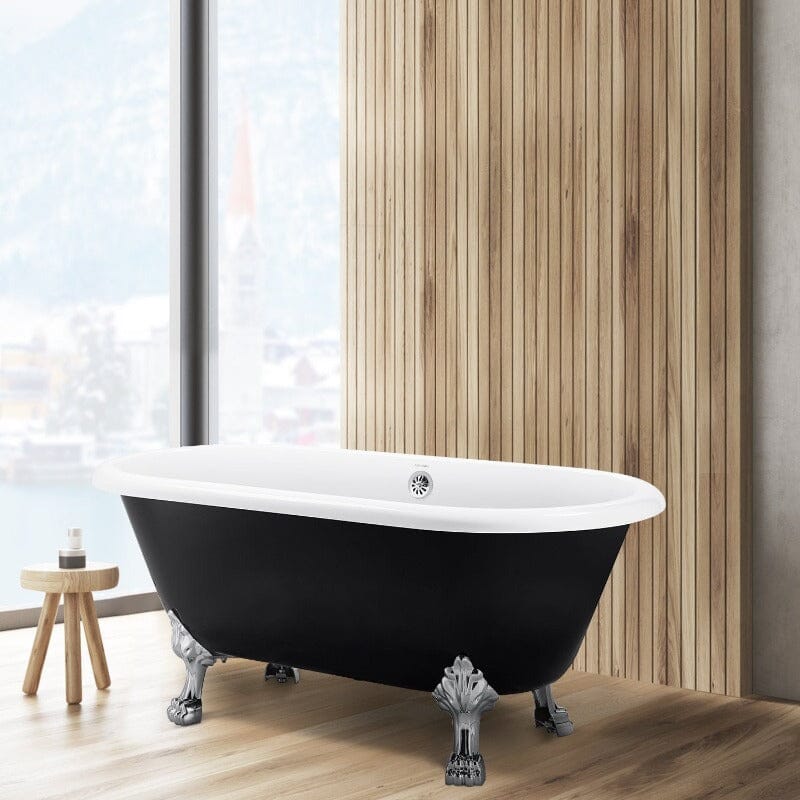
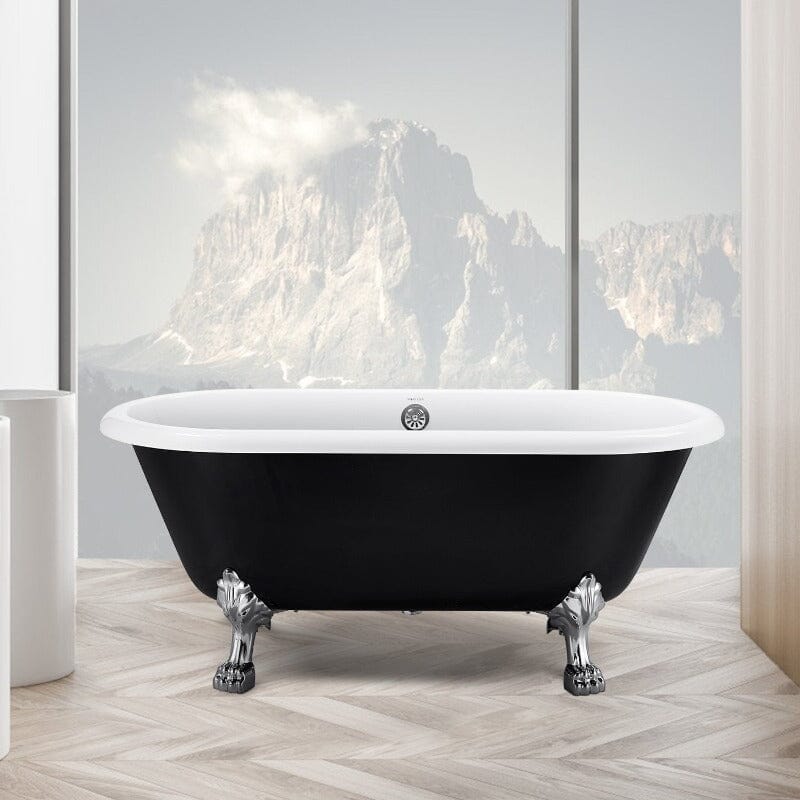 59" Double Ended Clawfoot Bathtub, Classical, Acrylic, IAPMO Certified
59" Double Ended Clawfoot Bathtub, Classical, Acrylic, IAPMO Certified- Regular price
-
$779.99 $1,299.99 - Regular price
-
$0.00 - Sale price
-
$779.99 $1,299.99
Quick view
-
67" Clawfoot Tub Solid Surface Stone Resin Freestanding Soaking Bathtub
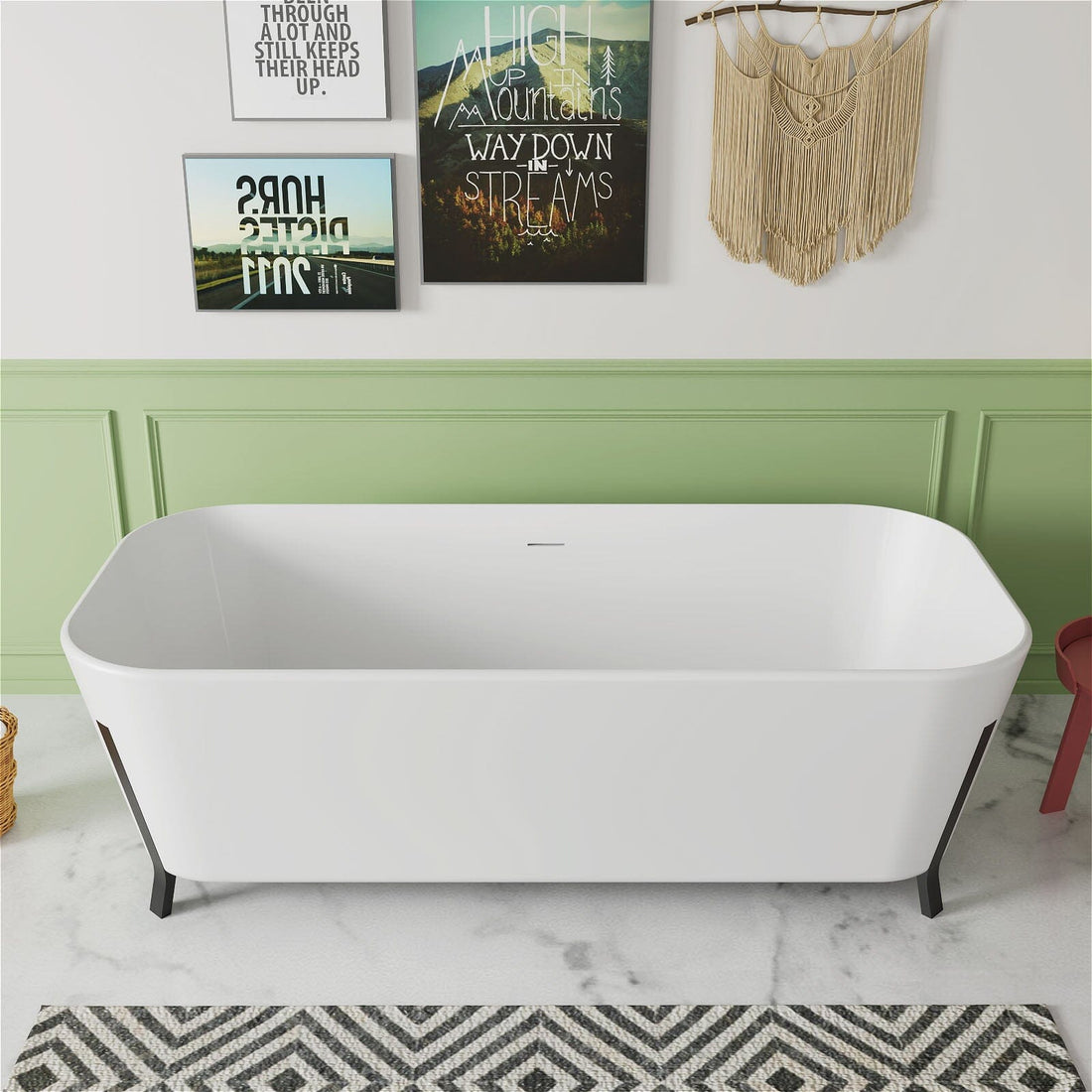
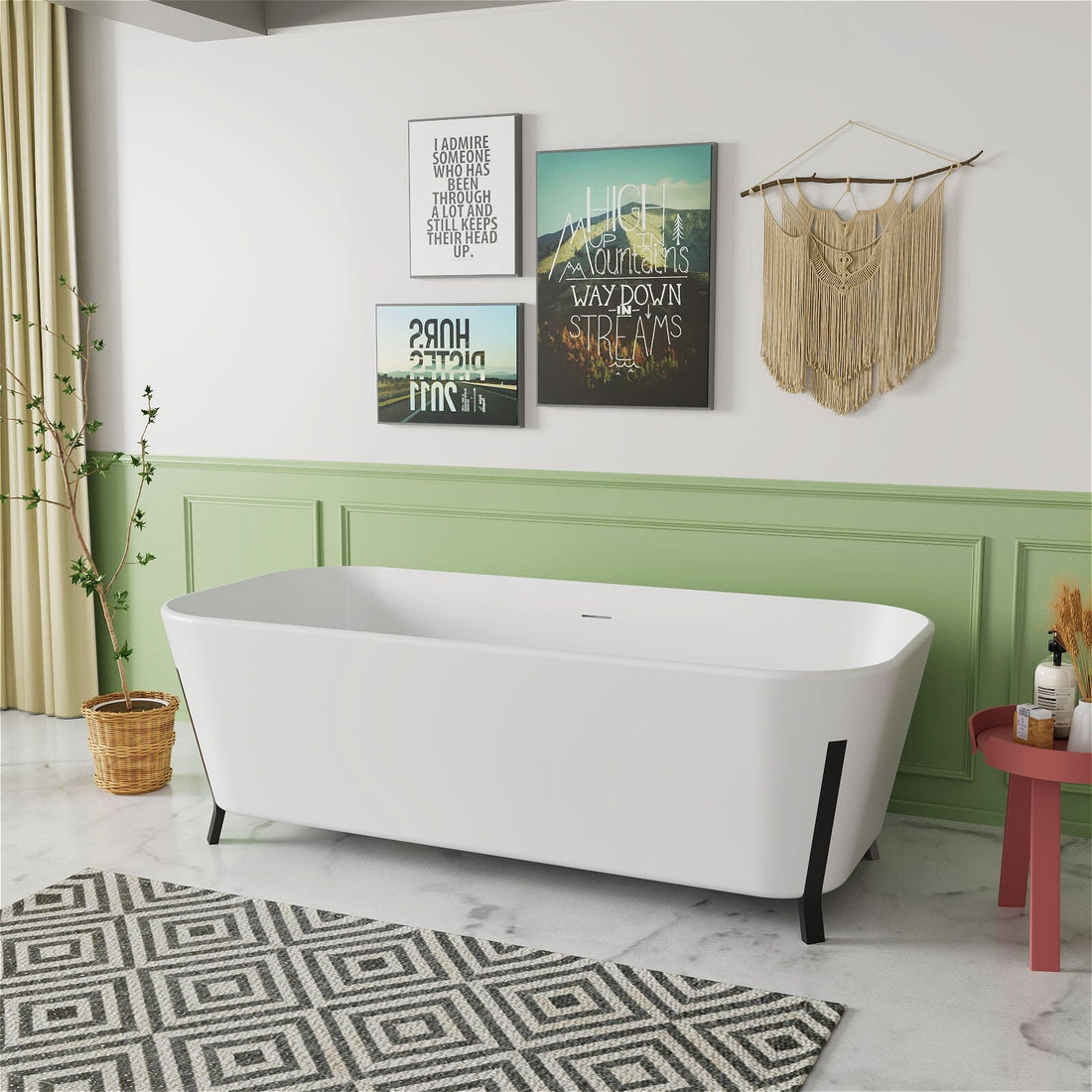 67" Clawfoot Tub Solid Surface Stone Resin Freestanding Soaking Bathtub
67" Clawfoot Tub Solid Surface Stone Resin Freestanding Soaking Bathtub- Regular price
-
$1,699.99 - Regular price
-
$2,699.99 - Sale price
-
$1,699.99
Quick view
-
Mokleba 67'' Oval Acrylic Fluted Freestanding Soaking Bathtub with Feet
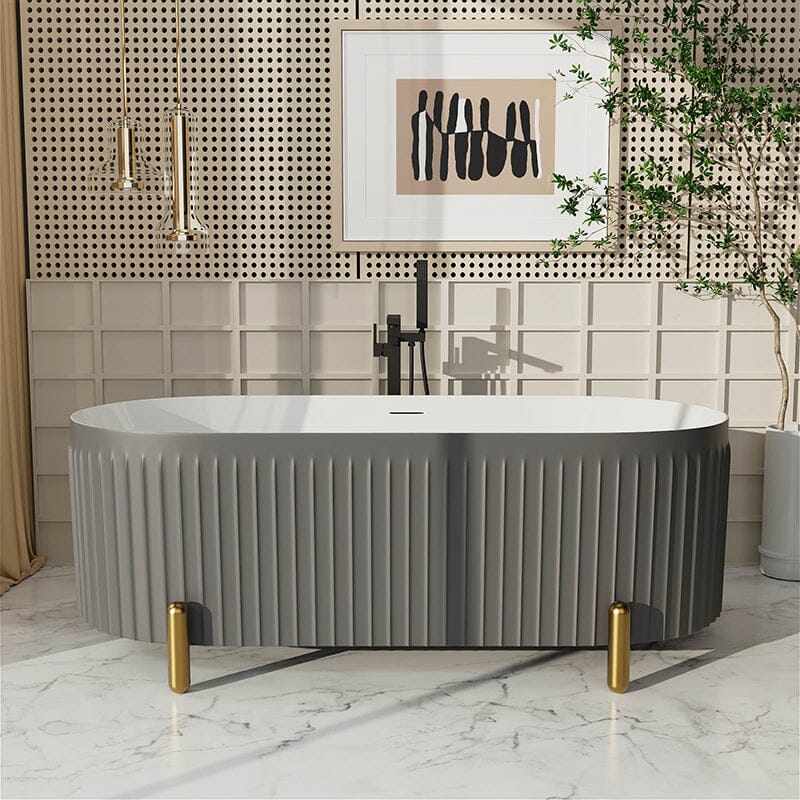
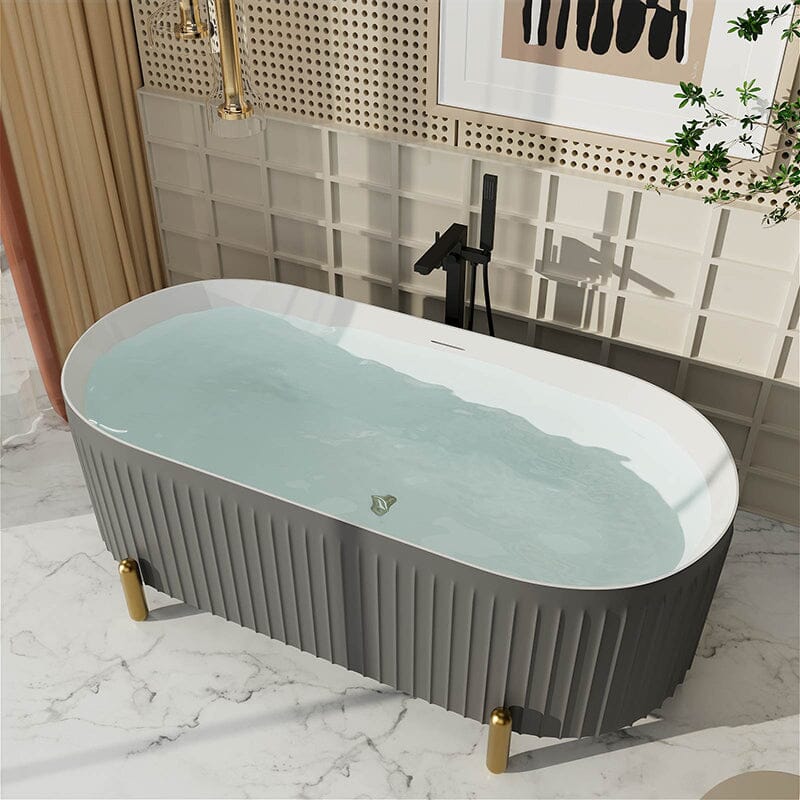 Mokleba 67'' Oval Acrylic Fluted Freestanding Soaking Bathtub with Feet
Mokleba 67'' Oval Acrylic Fluted Freestanding Soaking Bathtub with Feet- Regular price
-
$1,099.99 - Regular price
-
$1,699.00 - Sale price
-
$1,099.99
Quick view
Choosing a Clawfoot Bathtub

Cast Iron
Cast iron is the most classic material for clawfoot bathtubs. The production process involves applying an enamel coating to an iron mold, resulting in a sturdy and durable bathtub. The advantages of cast iron bathtubs lie in their excellent reliability and insulation properties, allowing them to retain water temperature for an extended period. However, cast iron bathtubs are quite expensive and very heavy. If you are considering purchasing a cast iron clawfoot bathtub, make sure the floor is strong enough to support its weight.

Copper
Copper clawfoot bathtubs are another metal option, but they are usually not coated with enamel, resulting in poorer insulation and a less comfortable surface feel compared to enamel bathtubs. Although copper bathtubs are visually appealing and make for excellent decorative pieces, you might want to reconsider if you are looking for the ultimate soaking experience.

Acrylic
Acrylic is one of the most common bathtub materials today. Its features include affordability, antibacterial properties, lightweight, and good insulation. Acrylic bathtubs meet almost all the needs people have for bathtubs. However, their modern appearance might not suit those who are purchasing a clawfoot bathtub for its vintage style.
Ending
A clawfoot bathtub is a classic design that has been beloved since the 19th century, especially among homeowners who seek a vintage bathroom aesthetic. As demand has evolved, clawfoot bathtubs have also innovated, resulting in various styles that cater to the needs of most homeowners, whether they prefer vintage or modern designs. If you are considering installing a clawfoot bathtub, please weigh its pros and cons to determine if it is the right choice for you.
More Ideas
-
How Long Does a Bathtub Last?
Wondering how long your bathtub will last? Learn the lifespan of different bathtub materials and get tips on how to extend their durability. From fiberglass to cast iron, find out...
-

Top 5 Acrylic Bathtub Brands – 2025
Discover the best acrylic bathtub brands, offering options for every budget and style. From affordable yet durable models to luxurious, feature-rich tubs, explore top picks like Giving Tree Home, American...
-

12 Small Bathroom Renovation Design Ideas
Transform your small bathroom with innovative design ideas! Discover clever storage solutions, space-enhancing techniques, and stylish accents that will make your compact bathroom feel spacious, functional, and inviting.
-

Different Types of Faucet Finishes: Which Is the Best?
Discover the best faucet finish for your home! Explore the pros and cons of chrome, brushed stainless steel, copper, matte, and ceramic coatings to match your style, needs, and budget....
-

Slow Draining Bathtub? Fix It in 3 Simple Steps!
Is your bathtub draining slowly? Don't ignore the problem! Discover 3 simple, cost-effective steps to fix slow drainage and prevent future issues. Learn how to clean the drain stopper, unclog...
-

Different Types of Bathtubs: Pros & Cons Analysis
Discover the perfect bathtub for your home! From luxurious freestanding tubs to space-saving alcove options, we break down popular styles with pros and cons to help you choose the ideal...











